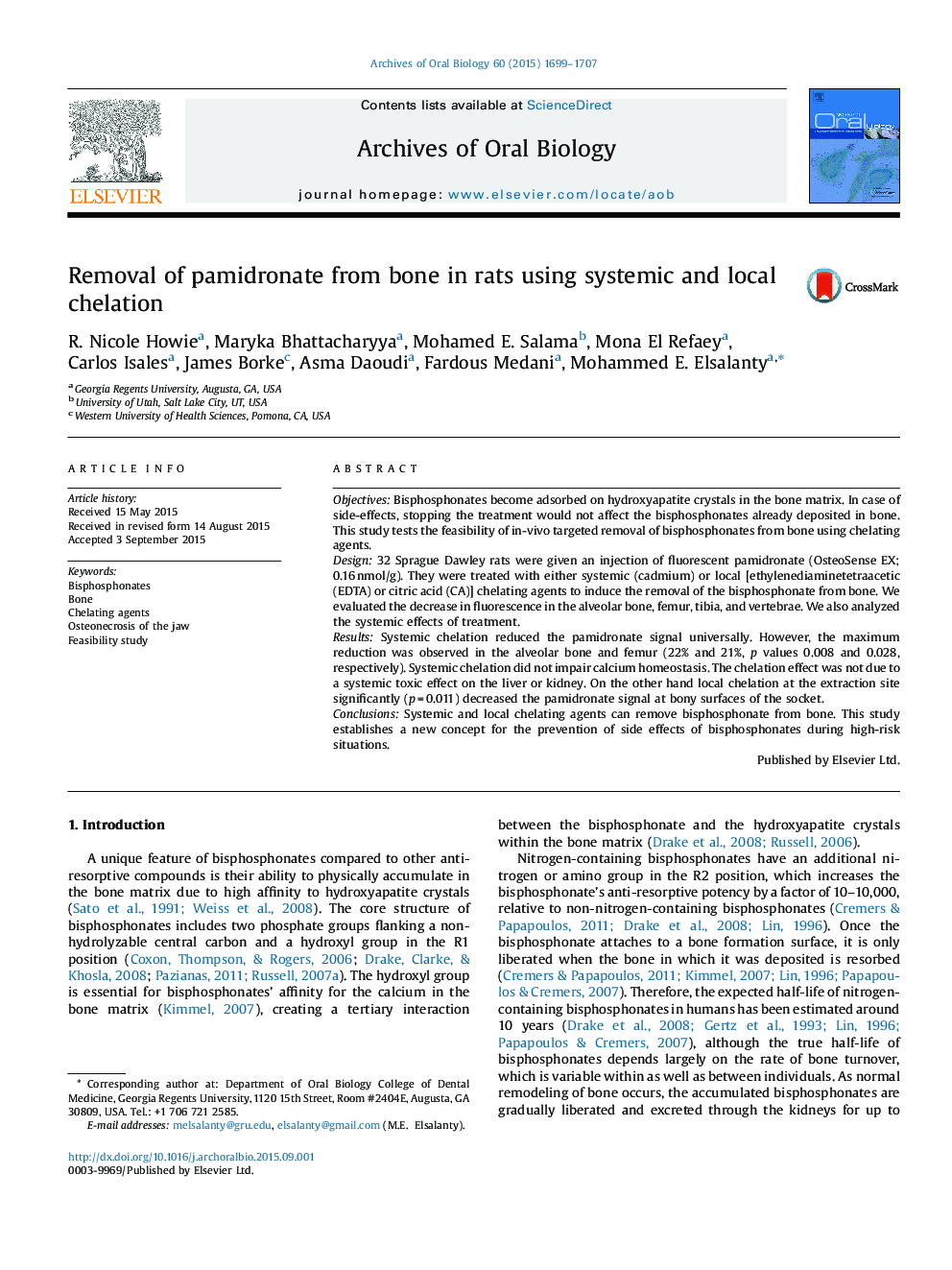| Article ID | Journal | Published Year | Pages | File Type |
|---|---|---|---|---|
| 3120651 | Archives of Oral Biology | 2015 | 9 Pages |
•This study proved the feasibility of removing bisphosphonates from bone in-vivo.•Systemic agent reduced the bisphosphonate signal from the skeleton.•This effect was due to a direct action on bone.•Local application produced a similar effect on extraction sites in the mandible.•Results suggest a new strategy to prevent BRONJ following dental procedures.
ObjectivesBisphosphonates become adsorbed on hydroxyapatite crystals in the bone matrix. In case of side-effects, stopping the treatment would not affect the bisphosphonates already deposited in bone. This study tests the feasibility of in-vivo targeted removal of bisphosphonates from bone using chelating agents.Design32 Sprague Dawley rats were given an injection of fluorescent pamidronate (OsteoSense EX; 0.16 nmol/g). They were treated with either systemic (cadmium) or local [ethylenediaminetetraacetic (EDTA) or citric acid (CA)] chelating agents to induce the removal of the bisphosphonate from bone. We evaluated the decrease in fluorescence in the alveolar bone, femur, tibia, and vertebrae. We also analyzed the systemic effects of treatment.ResultsSystemic chelation reduced the pamidronate signal universally. However, the maximum reduction was observed in the alveolar bone and femur (22% and 21%, p values 0.008 and 0.028, respectively). Systemic chelation did not impair calcium homeostasis. The chelation effect was not due to a systemic toxic effect on the liver or kidney. On the other hand local chelation at the extraction site significantly (p = 0.011) decreased the pamidronate signal at bony surfaces of the socket.ConclusionsSystemic and local chelating agents can remove bisphosphonate from bone. This study establishes a new concept for the prevention of side effects of bisphosphonates during high-risk situations.
